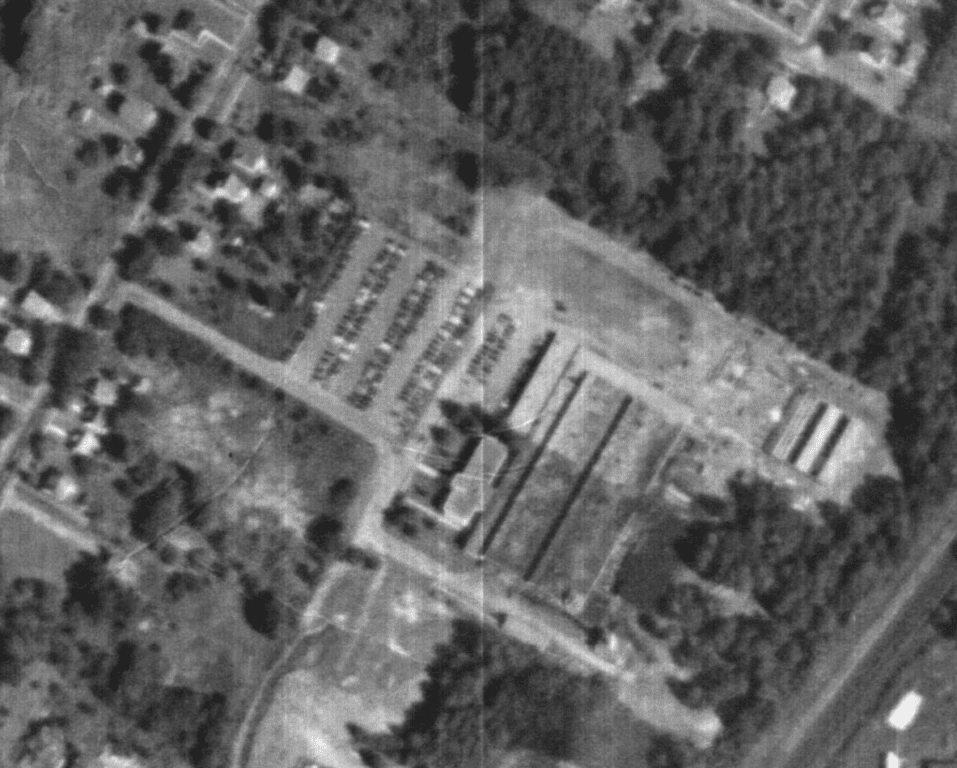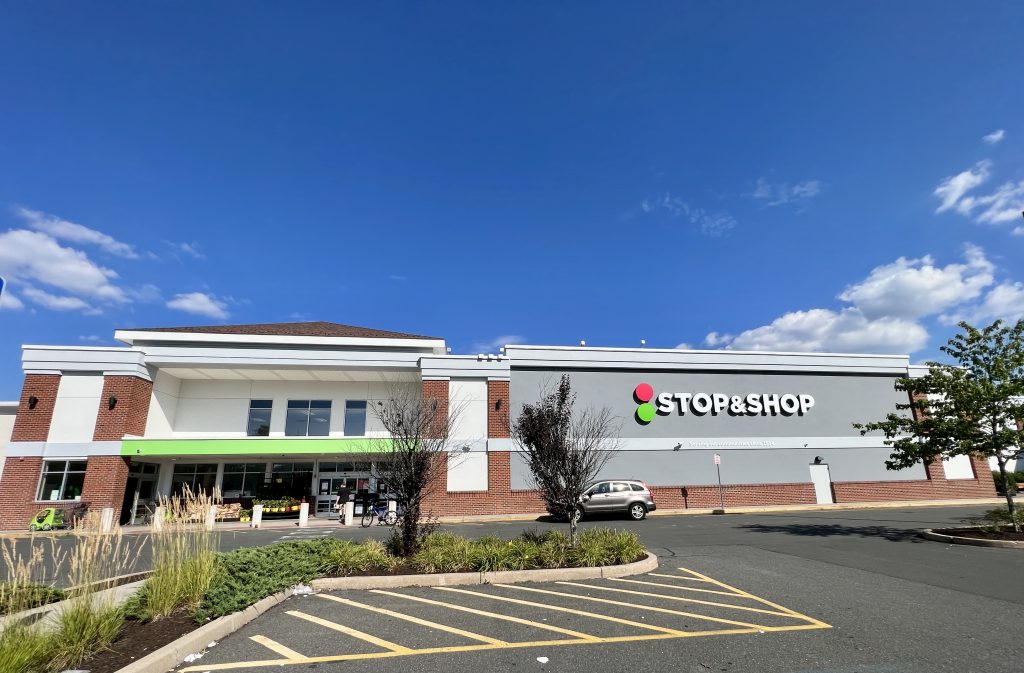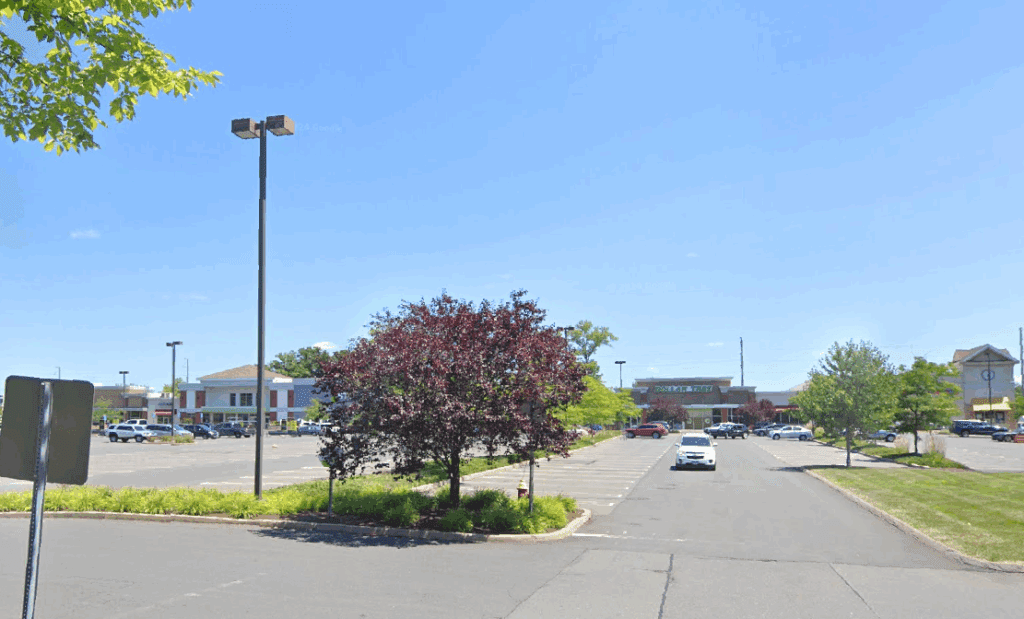From the West Hartford Archives: Jacobs Manufacturing Company

Audio By Carbonatix

Jacobs Manufacturing. Photo courtesy of Noah Webster House & West Hartford Historical Society
Historian Jeff Murray takes a look into West Hartford’s past to uncover some surprising information, stir up some memories, or reflect on how much life has changed – or hasn’t changed at all. Enjoy this week’s ‘From West Hartford’s Archives’ …
By Jeff Murray
In the late summer of 1940, the West Hartford Building Department issued a permit to the Jacobs Manufacturing Company for a new factory and office building on Newington Road across from Elmfield Street. The two-story office, factory, and powerhouse construction was estimated to cost more than $150,000. Within six months, the company had moved its equipment to Elmwood from its original site on Park Street in Hartford.
In 1902, Arthur Irving Jacobs had developed the modern drill chuck. This specialized clamp designed to hold drill bits or other rotary tools in place had already been invented, but the Jacobs design became the most common one for these types of tools. The Jacobs Manufacturing Company was incorporated and in 1916, Louis Stoner, who had been secretary and treasurer of the Hartford Morris Plan Company, resigned and joined the Jacobs Manufacturing Company as treasurer.
Stoner’s long-term position as an officer of the company during the industrial growth of the United States brought him immense wealth and by the 1920s, he had a Tudor Revival mansion built on Stoner Drive off Mountain Road. Within the year, Arthur Jacobs, the founder, had married and built a shop on Park Street in Hartford for the factory.
The company was highlighted in the Hartford Courant at the end of 1916 for joining the numerous other manufacturing businesses that had taken root in the city. Between 1914 and 1916, Hartford enjoyed a massive industrial expansion. Colt Firearms, Underwood Typewriter, and Billings & Spencer had all built large and expensive additions to their factories.
There was increased activity across the nation as World War I broke out overseas. Colt dedicated an entire building to the manufacture of the Vickers machine gun. All of the factories increased production by running extra shifts on the floor or building additions to accommodate higher commercial demand. Abandoned buildings were swept up by new enterprises. In this span of time, 64 new factories were built in the city, an incredible feat. Allied nations like Britain and France drove large purchases of arms, ammunition, and other manufactured goods, making Hartford (with a strong base in precision manufacturing) ideally positioned to benefit from these orders. European powers, focused on the war, shifted their commercial purchasing away from the continent and towards the U.S., shielded from the conflict (at least for now).
In Hartford, Jacobs expanded production of its patented drill chucks and portable tools, which became standard in machine shops, factories, and on assembly lines. During the boom years after World War I ended, the drill chuck remained in high demand for use with lathes, drill presses, and early electric hand drills. Production was hit hard by the Great Depression, however, and manufacturing declined sharply into the mid-1930s.
Business began to rebound by 1938 though. At the tail end of the Depression, there were signs of recovery. Industrial retooling was beginning as the U.S. anticipated increased global instability (especially in Europe, a year before World War II broke out). There was also a surge in individual tool ownership as more Americans set up home workshops, mainly for economic self-reliance.
Portable drill manufacturers were one of the largest buyers of Jacobs chucks. The most notable development was the growth in the automotive industry, supported by New Deal programs and improving consumer confidence. Treasurer Louis Stoner, who had overseen much of the growth over the previous two decades, noted that portable drills were used extensively in car body work, making Jacobs chucks essential components in mobile drilling tools used on car assembly lines and in maintenance.
This recovery in demand and production capacity was one of the key drivers for the movement from Park Street to West Hartford in 1940.

The Jacobs plant on the east side of Newington Road in 1951 on the site of the current Stop & Shop plaza.
Building in 1940 hit a record high in West Hartford. Niles-Bement-Pond built a factory addition on New Park Avenue and the new convent at Prospect Avenue and Park Road had been completed recently. A staggering volume of residential building was responsible for the issuance of 655 building permits (with only two of them not single-family homes).
The Jacobs Manufacturing Company’s introduction to West Hartford through the plant in Elmwood came at the right time too. In the early 1940s, they developed the Super Chuck – a high-precision, heavy-duty drill chuck used primarily in heavier industrial machinery, like milling machines. Machine shops, industrial plants, defense contractors, and tool manufacturers made this tool especially popular during World War II when the U.S. industrial base required reliable tooling for weapons and vehicle production.
The Jacobs expansion was also strategic for West Hartford. While the west side of Newington Road was stocked with houses built between 1910 and 1930, the east side rear was still relatively bare by the time they bought the land. The area south of Elmfield Street was graded, paved, and built over. Jacobs Road was laid out beyond the houses fronting on Newington Road. The use of this area for industry had a precedent going back decades.
The rear of Newington Road provided easy access to the railroad tracks between Elmwood Station and Newington Junction. Like Parkville, the railroad in Elmwood provided the scaffolding for old industry.
In September 1960, over 200 plant personnel went on strike, so we get a good look at how Jacobs advertised themselves to workers crossing the picket line: “a long-established leader in its industry and the manufacturer of the famous Jacobs Chuck, distributed throughout the free world. The company is also entering the diesel engine accessory field which promises a bright future for growth and expansion.”
Jacobs acquired the design to a compression release engine brake invented by Clessie Cummins and named it the Jake Brake. This device installed on diesel engines (especially in heavy-duty trucks) would help slow down the vehicle without using the traditional friction brakes. This brake was very loud and choppy (it’s a very familiar sound that we have all heard!), leading some localities to adopt “No Jake Brake” signs. This expansion into the diesel engine business was sold to any new employees (and was eventually created as an separate division that would break off from Jacobs Manufacturing in the 1980s and move to Clemson, South Carolina), but the core business remained centered on the chuck.
The company laid out a new entrance north of Jacobs Road and interviewed and hired countless tool room lathe men, jig bore operators, grinders, inspectors, and set-up men for turret lathes. The strike lasted until June 1961 (and some neighbors even protested “profanity” by striking employees directed at people walking past them). After the National Labor Relations Board found Jacobs guilty of unfair labor practices in January 1962, the two sides came together and ratified a new contract at the end of the summer.
Jacobs put the plant up for sale in 1984 to consolidate company operations. Employees were relocated in December 1985 to a more modern facility in Bloomfield and Industrial Safety Supply negotiated for the site in Elmwood. Industrial Safety Supply was located on New Park Avenue, but the Newington Road location would become office headquarters and a warehouse by the late 1980s.
Industrial safety supplies were, like the Jacobs chucks of early industry, a product of the era. The Occupational Safety and Health Administration (OSHA) was established in the early 1970s, but after a decade, it had strengthened inspections, standards, and penalties. It had also expanded its focus on personal protective equipment, workplace ergonomics, and hazardous materials, which created a growing demand for hard hats, gloves, goggles, ear protection, and respirators.
The 1980s also saw a surge in workplace injury lawsuits and workers’ compensation claims, prompting companies to invest in safety supplies simply to reduce liability and insurance costs. The Newington Road site focused on things like material handling, safety equipment, fire extinguishing equipment, emergency medical products, plastics, and non-sparking tools. Steel tools could cause fires or explosions in hazardous environments (like oil refineries, chemical plants, and grain silos), so beryllium copper tools could fill the need of a safer work environment, especially for plant maintenance. I also happened to see an advertisement by the company in 1993 for Gatorade, which was a bit interesting to me.
Industrial Safety Supply celebrated 50 years in business in 1994. In 2005, the company planned to relocate and negotiated for a new grocery store with Stop & Shop. It was acquired by Winstanley Enterprises, which demolished the factory and office buildings in the rear, in 2008.
When the plaza opened in 2010, it featured a Stop & Shop gas station, bank and restaurant, and a new store for Crazy Bruce’s Liquors, which tore down the building closer on Newington Road. Perhaps the next time you go into Stop & Shop on Newington Road, you might think about the fact that you’re walking on the grounds of an old factory from roots of modern industry.

Stop & Shop, 176 Newington Rd., West Hartford. Photo credit: Ronni Newton

Google Street View on Jacobs Road
Jeff Murray was born and raised in West Hartford and has been involved with the Noah Webster House & West Hartford Historical Society since 2011 when he was a high school student and won the Meyer Prize for his essay on local history. Jeff routinely volunteers as local history researcher uncovering information for numerous museum programs such as the West Hartford House Tour and West Hartford Hauntings. Jeff works as a data analyst at Pratt & Whitney.
Like what you see here? Click here to subscribe to We-Ha’s newsletter so you’ll always be in the know about what’s happening in West Hartford! Click the blue button below to become a supporter of We-Ha.com and our efforts to continue producing quality journalism.



